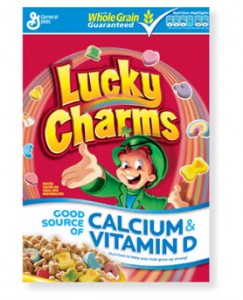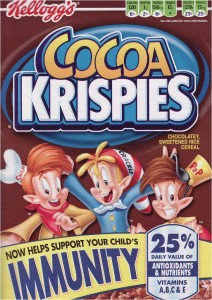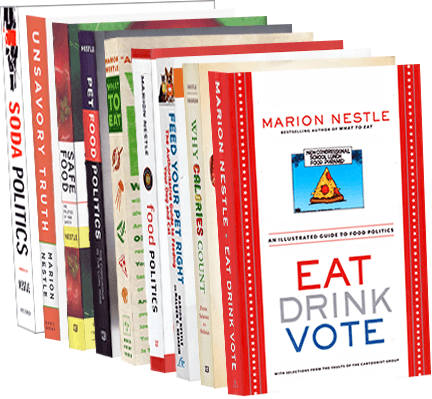Kellogg settles class-action health-claims suit
Kellogg has had a bad year on the truth-in-advertising front.
First, It took the brunt of the furor over the late and unlamented Smart Choices fiasco, when the program’s first logo turned up on Froot Loops of all things and was attacked by the Connecticut attorney general.
Next, the IMMUNITY banner on Cocoa Krispies drew fire from the San Francisco city attorney’s office.
Both boxes are now collectors’ items.
Now, FoodNavigator-USA reports that Kellogg has taken another expensive beating, this time on its health claim for Mini-Wheats.
In 2009, Frosted Mini-Wheat boxes sported this health claim: “Clinically shown to improve children’s attentiveness by nearly 20%.”
Of course this cereal can do that, especially when kids eating it are compared to kids who don’t eat any breakfast at all—which is what this study did.
But that’s not what the adorable television advertisements imply, as shown in exhibits A and B in the summary of the class-action decision.
Last April, Kellogg settled a dispute with the FTC over this claim. The FTC did not argue that the claim was inherently absurd because of the lack of an appropriate control group for the study. Instead, it took the study at face value and charged Kellogg with exaggerating the results because hardly any children—only 11%—improved attentiveness by 20% or more.
Kellogg has just settled a class-action suit over this claim that will cost the company $2.75 million in order to pay customers between $5 and $15 each in compensation. The company also will give $5.5 million to charities.
Because of city and state attorneys and the FTC, the most egregious health claims are slowly disappearing from cereal boxes. But lawsuits do not constitute policy. What goes on the front of food packages is FDA territory.
FDA: Get to work!






